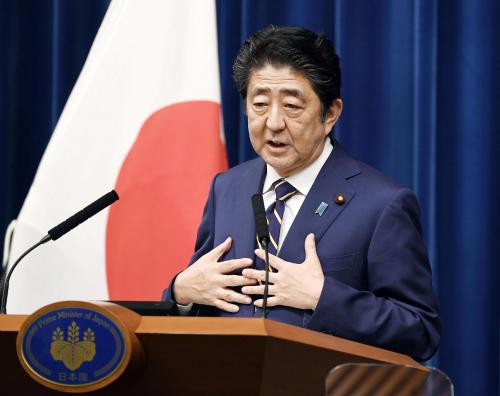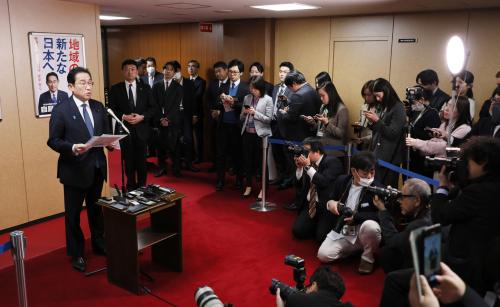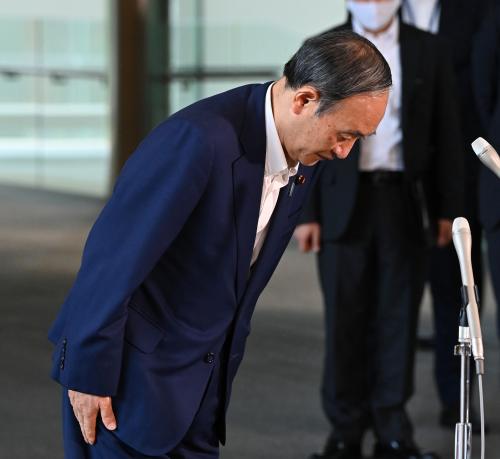When Japanese Prime Minister Shinzo Abe called a snap parliamentary election in September, he said he was seeking a fresh mandate to overcome a “national crisis” amid renewed and rising threats from North Korea (which had recently flown ballistic missile tests over Japanese territory). The vote that took place on October 22 kept Abe’s Liberal Democratic Party in power in Japan’s Diet. What does that outcome mean, and what comes next?
1What were the results of the election?
Once again, the ruling coalition of the Liberal Democratic Party (LDP) and the Komeito won a strong victory, retaining a two-thirds majority of the Lower House. The LDP alone holds an absolute majority with 284 of 465 seats (233 seats are required for a simple majority). This means that the ruling coalition has a firm lead in the Japanese Diet to advance its legislative agenda, since it can control the appointment of all chairs in the Lower House standing committees.
The change in this election centered on the realignment in the opposition camp. Two new parties were launched to run in this election: the Party of Hope, centered around the governor of Tokyo, Yuriko Koike; and the Constitutional Democratic Party of Japan (CDPJ), led by Yukio Edano, former secretary general of the Democratic Party (DP). The former main opposition party, the Democratic Party (DP), dissolved its Lower House caucus prior to the election, allowing its members to join either of the newly formed parties or run as independents. The Party of Hope won 50 seats and the CDPJ won 55 seats, becoming the largest opposition party in the Diet (the DP had previously held 97 seats in the Lower House and still holds 50 seats in the Upper House). These numbers reveal a very important fact: Japan’s opposition has never been more fragmented.
While this scenario looks very familiar—a ruling coalition with a tight grip on power and a fragmented, and therefore ineffective, opposition camp—this election was not just a repeat performance of the last election in 2014. There were new dynamics and even surprises, perhaps planting the seeds for change in the future.
2Why was this election significant?
This election posed essential questions for the future of Japan. Could Prime Minister Abe recover from recent setbacks and cement his position by delivering another electoral win, paving the way for him to be reappointed next year as party president, and putting him on track to become the longest serving prime minister in Japan? Or could a maverick politician become a credible challenger, tap into the army of unaffiliated voters, and deliver a major electoral upset? The Japanese voters have spoken, but when the snap election was first announced, the outcomes looked more open ended.
It is important to keep in mind that this was a snap election, so the prime minister controlled the timing and, naturally, he called the election at a time that looked most advantageous to him. Better to hold an election now, the calculous goes, when his public support levels were beginning to recover but also when it would be too early for the rising political figure of Governor Koike to become a more formidable opponent. The first surprise was that just as Prime Minister Abe called the snap election, Governor Koike announced the launch of the new Party of Hope. The next head-turner came when the leader of the Democratic Party gave free rein to party members to run under the banner of the Party of Hope. But this was not a party merger, since Koike established preconditions for candidates to join the party—among them, support for constitutional reform.
In the end, despite the public attention surrounding Governor Koike and the formation of her new party, “Koike fever” did not catch on. The Party of Hope did not capture the public’s imagination this time. A real dent to the LDP’s lead in the Diet would only happen if voters came out in droves to vote for the new offering. But, in fact, election turnout was very low—in the neighborhood of 53 percent. The weather didn’t help (a major typhoon was approaching Japan on the day of the election, likely curbing voter turnout), but by and large the election outcome was already known as the Party of Hope faltered.
Watch Senior Fellows Richard Bush and Mireya Solís discuss the Japanese election outcomes:
3Who was Prime Minister Abe’s main challenger?
This election was very much framed as an Abe-Koike contest, although, in another interesting twist, it is Edano who has emerged as the leader of the largest opposition party. Governor Koike was actually the defense minister in the first Abe cabinet in 2007, but has now emerged as a political figure capable of challenging the LDP establishment. She challenged the LDP’s old guard to run as an independent and won the governorship of Tokyo in July 2016, and then she delivered a landslide victory in the Tokyo Metropolitan Assembly election last July for her regional political party Tokyoites First.
With this track record, her slick rollout of the Party of Hope made many people in the LDP nervous. So why did the Party of Hope fizzle? In the end, Prime Minister Abe’s calculation was right: it was too early for the Party of Hope to become a credible challenger. The party struggled to find sufficient candidates to run, it was financially strapped, and it had difficultly differentiating itself from the LDP (after all, we are talking about two conservative parties whose views align on security policy). Instead, Koike tapped into the promise of reform, drawing on her image as a can-do female politician not tied down by the old boys network. The party developed a 12-point policy platform of 12 “zeroes,” which included a proposal to phase out nuclear power by 2030, opposition to the scheduled consumption tax hike (part of an economic plan known as “Yurinomics”), and a proposal to eliminate hay fever and overcrowded trains, among other things. Many of the policy proposals were not very realistic and did not convey fundamental reorientation in Japan’s economic policy to tackle deflation.
In the end, however, the biggest obstacle was political leadership. The Party of Hope is built around the figure of Koike, but she was not running in the election—rather, she remains Tokyo’s governor and still has promises to fulfill to the residents of Tokyo. This means she was not a contender to become prime minister in this election. And this, in a fundamental way, punctured enthusiasm for this election. It is hard to organize a political revolution when the charismatic leader is not up for the top position in the land.
The Constitutional Democratic Party and its leader Yukio Edano, who ultimately became the primary opposition leader, built up more and more momentum as the election progressed. While the party may be a reconstitution of the Democratic Party, attracting many of the liberal members of the DP, their consistent policy stance—which is clearly in opposition to the LDP—likely appealed to voters.
4What are the implications of this election for Japan’s politics and policy going forward?
There are two areas to focus on in this regard: the role of women in politics and constitutional reform.
Politics is an area where women in Japan have made very few inroads. Japan ranks last among OECD nations in the share of women elected to political office. With Koike leading the charge in launching a new political party, there has been a renewed focus on whether change is forthcoming on this front. While her party’s defeat in this national election does not bode well, a record number of women were elected to the Tokyo Metropolitan Assembly in July (women now hold 36 of 127 seats) in an election dominated by Koike’s Tokyoites First party. This is important because it can serve as a training ground for female politicians to start at the local level and then move up to national politics. Nor should we assume that Koike’s fate has been sealed. She is the governor of Tokyo, where a large share of the Japanese population lives, and her ability to influence national politics in Japan in the future will depend on her performance in Tokyo over the next few years.
This election generated a lot of interest for the implications it may have for constitutional reform in Japan. Japan’s constitution has never been amended, and this election has brought the prospect of constitutional revision closer than ever before—although it is still a possibility, not a certainty. Two factors are important here. First, the LDP does not have a supermajority in either house of the Diet on its own, and support from two-thirds of the members of each house in the Diet is one of the requirements for constitutional amendment. So, in order to amend the constitution, the LDP will have to work with its coalition partner, the Komeito, as well as other parties that are well disposed towards constitutional reform but whose ideas may not align exactly with the LDP’s, such as the Party of Hope and Nippon Ishin no Kai. There is likely to be a lot of negotiation amongst the parties. Second, and more importantly, the ultimate fate of constitutional reforms will be decided outside the Diet, since a majority vote in a national referendum is required. That threshold has not been met yet.







Commentary
Four questions about Japan’s snap election, answered
October 25, 2017